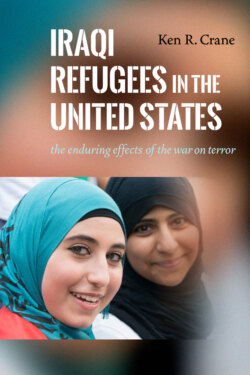Читать книгу Iraqi Refugees in the United States - Ken R. Crane - Страница 10
На сайте Литреса книга снята с продажи.
1 Belonging and Displacement
ОглавлениеIf only memory, or hope, or regret
Could one day block our country from its path.
If only we feared madness.
If only our lives could be disturbed by travel
Or shock,
Or the sadness of an impossible love.
If only we could die like other people.
—Nazik Al-Malaika, “New Year”
The removal of belonging for Iraqis happened suddenly after the US invasion in 2003. This unfolded in different ways. Letters were delivered with religious symbols crossed out, hinting that people of a certain religion would be killed if they stayed in the neighborhood; family members were murdered or kidnapped and held for ransom; armed thugs came to places of work; churches and mosques, sacred symbols of religious communities, were bombed. For some Iraqis, the message was less violent but still effective. Messengers came to tell wives and daughters that they must dress differently; employment was contingent on membership in a certain tribe or political party. Whatever the means used to get the message of nonbelonging across, the chaotic and violent aftermath of the 2003 invasion was a crisis point for a huge swath of the Iraqi population.
In the years following the invasion, violence toward civilians escalated to the point that no group was left untargeted. Millions of Iraqis were faced with decision points—to stay or flee, where to go, how to get there, for how long, how do we survive, and what comes after that? The words “crisis” and “decision” are etymologically connected. “Crisis” originates from the classical Greek verb κuív-ειv—“to decide”—and in English, it has come to mean, among other things, “a turning point.”1 The violent denial of belonging precipitated a crisis—a search for its recovery.
What follows is a series of individual and family migration histories that represent common experiences of the violent removal of belonging, followed by exile and survival in surrounding countries, and finally the momentous decision points about asylum seeking and resettlement in countries outside the Middle East.2 While each of these individuals’ stories is unique, they illustrate common features of the Iraqi refugee experience.3 These portraits are by no means an exhaustive portrayal of the entire range of Iraqi experience but rather heuristic devices to explore individual lives as windows onto the loss and search for belonging. Their experience of resettlement in the Inland Empire of California, which is the focus of this book, was not an endpoint but rather a station along a continuum of belonging.
